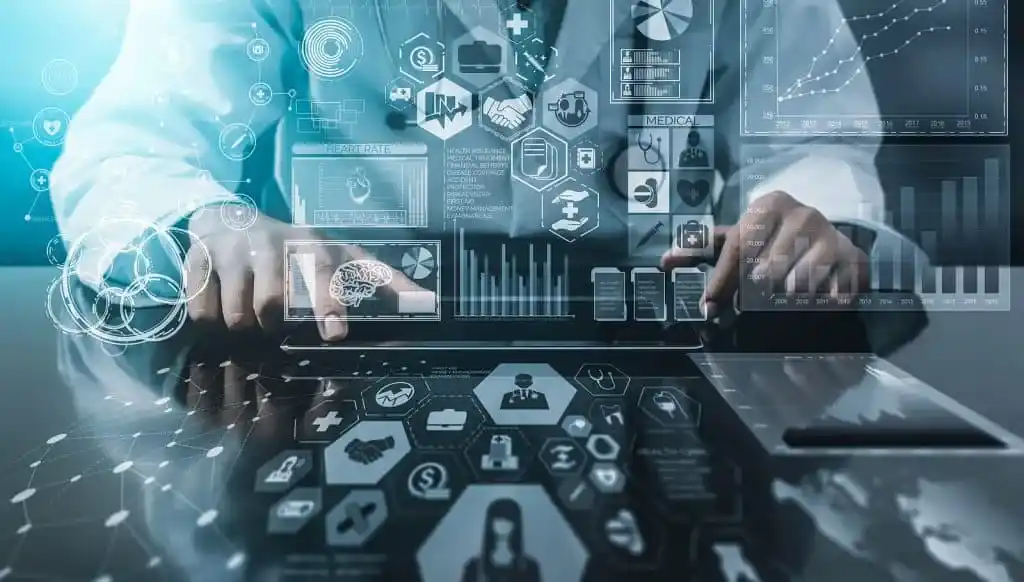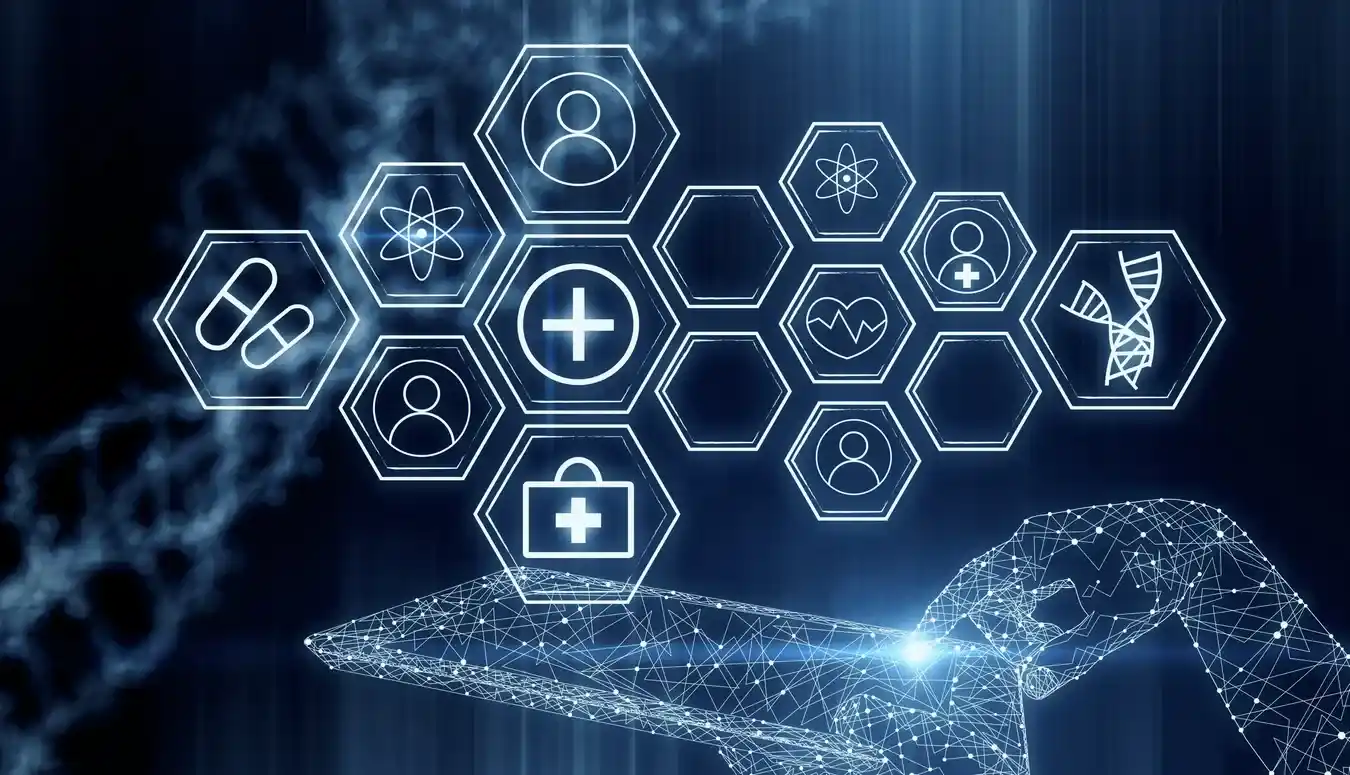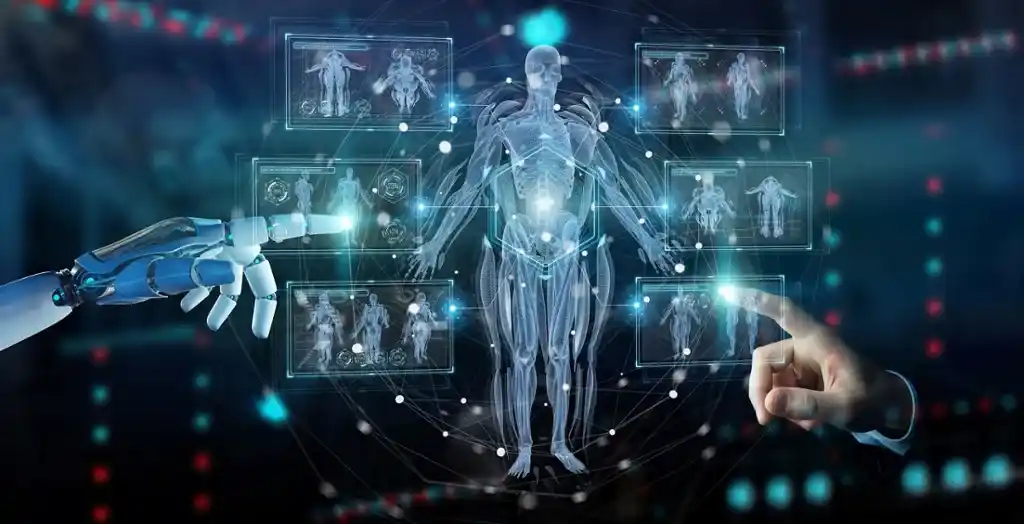Table of Contents
In the recent past, healthcare has been significantly transformed by the merging of technology and medicine. The most significant integration in this regard is the use of connected devices in healthcare systems. From wearable gadgets that monitor vital signs to smart medical equipment that facilitates remote diagnostics, the interconnected ecosystem has revolutionised the way we monitor, manage, and improve patient health.
The Internet of Medical Things is part of this revolution, connecting devices in a seamless health experience. This article discusses how IoT technologies can be integrated into healthcare, applications, benefits, challenges, and the potential for redefining the future of health monitoring.
Understanding the Internet of Medical Things (IoMT)
IoMT can be considered one of the main changes in health care, for in this network of interconnected devices and applications monitoring and managing a patient’s health by sensors with wireless communication of uploading data for cloud analysis provides enhanced accuracy in diagnoses, treatment, and management, thus giving pressure relief at health facilities while offering predictive analytics on potential risks of health complications at an earlier time. With improved patient outcomes and enhanced operational efficiency through streamlined workflows and reduced human error, the IoMT improves outcomes. This promising ecosystem will change the game in personalised medicine, remote care, and health delivery.
Applications of IoMT in Healthcare

Wearable Technology for Continuous Monitoring
Wearable devices such as fitness trackers, smartwatches, and biosensors are quite common in today’s healthcare practice. These devices monitor the rate of heartbeat, blood pressure, oxygen levels, and sleep patterns. For instance, patients who have chronic diseases like diabetes or hypertension can utilise wearable devices to monitor their vitals and have early intervention when there is any anomaly.
Connected Medical Equipment
Hospitals and clinics are adopting the increasing number of connected medical devices, such as infusion pumps, ventilators, and imaging systems. The connectedness allows remote monitoring and control to ensure optimal performance and timely maintenance. It is also possible for critical patient data to be sent directly to EHRs, eliminating potential manual entry errors and promoting better care coordination.
Remote Patient Monitoring (RPM)
Remote patient monitoring has become the new game in town, especially in the management of chronic diseases and post-operative care. Patients can now share their health data with physicians from the comfort of their homes through smart glucometers, blood pressure monitors, and ECG patches. This minimises frequent hospital visits and allows potential health issues to be identified before they become unmanageable.
Telemedicine Integration
With telemedicine, connected devices are even more in use. Wearable technology and smart medical equipment can be integrated into teleconsultations by doctors, thereby accessing the correct and latest information about the patient. For example, a patient experiencing cardiac symptoms can use a connected ECG device to transmit real-time data during a virtual consultation, enabling prompt action.
Smart Pills and Implantable Devices
With advances in miniaturisation, digestible sensors and implantable devices have become a reality. Smart pills are sensor-equipped medication pills that track the ingestion of drugs and record physiological changes. Implanted devices like pacemakers and neurostimulators can be accessed and adjusted and monitored remotely for improved patient results.
Impact of IoMT on Healthcare
IoMT profoundly impacts healthcare by:
- Enabling Remote Patient Monitoring (RPM): With IoMT, patients can provide their health metrics such as blood pressure, glucose levels, and heart rate to physicians. This helps patients reduce hospital visits and improves the management of chronic diseases.
- Enhancing Telemedicine: IoMT devices provide real-time data for virtual consultations, making accurate diagnoses possible and timely interventions feasible.
- Improving Operational Efficiency: Automated collection and sharing of data streamline the workflow, eliminate errors, and free up health care professionals for more patient-cantered care.
- Fostering Personalised Medicine: Continuous data monitoring allows for appropriate treatment to individual patients, betterment of results and patient satisfaction
Benefits of IoMT
IoMT offers numerous advantages, including:
- Operational Efficiency: IoMT reduces bottlenecks in administrative work because scheduling, billing, and documentation tasks are automated. Healthcare staff spend more time attending to the needs of the patient rather than being involved in paper work.
- Real-Time Data Collection and Analysis: It supports real-time data collection and analysis from medical devices and facilitates real-time processing of the data with immediate analysis. This can result in very rapid decision-making and personal healthcare.
- Increased accuracy: Through the elimination of human errors in the recording of patient information through automating data collection, IoMT ensures that there are more accurate diagnosis and treatment plans.
- Increased Safety for Patients: Continual surveillance decreases the danger of adverse incidents since potential anomalies can be anticipated by the clinician (like abrupt changes in vital signs).
- Better Resource Management: IoMT helps providers optimise the use of healthcare resources by predicting patient needs, reducing hospital readmissions, and effectively managing the level of staffing.
- Personalised Treatment Plans: The large set of individual patient data gathered allows healthcare providers to offer more tailored treatment options, improving overall patient care.
- Improved Interoperability: IoMT allows the different devices and systems to communicate with one another, therefore improving the integration of health data across different platforms and departments.
- Data-Driven Decision Making: The large volume of data created by IoMT devices can prove to be quite valuable for providing insights into understanding patterns, developing better care protocols, and predicting future health outcomes.
- Enhanced Drug Management: IoMT devices can monitor adherence to drugs and identify any issues, including missing doses or adverse reactions, thereby preventing medication errors and optimising therapeutic results.
Distinguishing IoMT and IoT: Understanding the Differences
IoMT is a subset of IoT but is uniquely designed for healthcare applications. The key differences are:
- Security & Privacy: IoMT devices are subjected to more rigorous security measures for protecting patient data, including the adherence to standards like HIPAA, which sets certain requirements for encryption, access control, and audit trails. IoT devices, while still needing security measures, generally handle less sensitive data and have less severe consequences if breached.
- Real-Time Monitoring: The continuous, real-time monitoring of patients such as heart rate, blood glucose levels, or blood pressure is aimed at the IoMT devices. Mostly, the data provided by these devices is critical for immediate healthcare decisions. They usually provide data for analysis over time in contrast to IoT-based devices that do not require such immediate action or response.
- Reliability & Accuracy: IoMT devices must meet rigorous accuracy standards because they directly impact patient health and care decisions. A malfunction or incorrect reading could lead to severe consequences. While IoT devices also need to be reliable, the consequences of failure in non-medical industries (like home automation or manufacturing) are not as life-threatening.
- Integration with Healthcare Systems: IoMT devices are designed to be seamlessly integrated with Electronic Health Records (EHR) systems, hospital management software, and other healthcare-specific platforms to ensure seamless data exchange and coordination of care. IoT devices, in contrast, might integrate with a much broader range of systems but not necessarily ones focused on healthcare.
- Clinical Decision Support: In the IoMT ecosystem, data from the devices is frequently used to support clinical decision support systems that are used by the healthcare providers in making critical decisions. IoT devices, on the other hand, usually do not support such specific decision-making tools but can be used to support business or operational decisions in other industries.
- Device Lifespan and Maintenance: In comparison, the lifespans of IoMT devices are often much longer and more prone to continued maintenance, calibration, and update requirements for keeping up with health care standards. Additionally, they have to pass through regulatory tests and certifications every so often. In general, IoT devices are more prone to having shorter life cycles with fewer stringent requirements in terms of maintenance and certifications.
The Importance of Security for IoMT

Security is among the cornerstones of IoMT adoption due to the sensitive nature of health data, setting it up as a likely target for cyberattacks. Security considerations include:
- Incident response plan: A well-thought-out incident response plan ensures an effective reaction with prompt action to contain, mitigate, and recover from security incidents with minimising damage to patient data and healthcare operations.
- Secure Communication: IoMT devices must utilise secure communication channels, such as HTTPS, VPNs, or encrypted protocols, to transfer sensitive health data in order to prevent eavesdropping or unauthorised access during data transfer between devices and healthcare systems.
- Device Authentication & Authorisation: The authentications provided to devices within the IoMT ecosystem have to be robust, and only authorised personnel are allowed to access or control the devices, or make changes to them. This should be supported by biometrics, passwords, and role-based access controls.
- Intrusion Detection Systems (IDS): One tries to implement IDS to track network traffic and any abnormal activity about its possible threats in the real time so that healthcare provides have enough time to respond to breaches.
- Audit Trails: Detailed access logs and transaction audit trails maintain transparency and help in tracing, in case of the breach. Therefore, this serves as a backup for compliance audit.
- Secure Cloud Storage: Due to the high number of data inputs from IoMT devices, a secure cloud would be needed where data is encrypted at a higher degree, with certain access control for users and is backed up well to avoid further loss or entry.
- Security by Design: IoMT devices should be designed with security in mind, utilising strong hardware security features such as tamper-resistant chips and secure boot mechanisms preventing unauthorised modifications to the device.
- Vulnerability Assessments & Penetration Testing: These are regular tests that help discover potential security vulnerabilities in the IoMT ecosystem prior to their exploitation by attackers.
The Future of Connected Healthcare
Artificial Intelligence and Machine Learning
Connected devices integration with AI and machine learning will facilitate better data analysis, thereby enhancing predictive analytics and providing tailored treatment plans. For example, algorithms powered by AI can predict the early symptoms of diseases such as sepsis or atrial fibrillation using wearable devices.
5G Connectivity
The new 5G network will enable communication between devices that is faster and more reliable. It supports real-time data transmission, which makes applications such as remote robotic surgeries possible.
Blockchain for Data Security
Blockchain technology will address the overall concern about data security and privacy through a decentralised and tamper-proof system when it comes to the storage and transfer of health data.
Edge Computing
Edge computing reduces latency by processing data closer to the source, enhancing the performance of connected devices in the remote or resource-constrained setting. Innovation will continue to soar with these advancements as IoMT improves patient care.
Integration with Smart Homes
Healthcare devices could be integrated with the intelligent smart home system to create holistic health monitoring. This is possible by integrating healthcare features into smart speakers, which would remind patients on when to take medications while connected appliances monitor dietary habits.

Conclusion
IoMT has transformed and empowered the evolution of healthcare from merely connectedness among devices and systems to facilitating easy interaction and integration among care providers. Remote monitoring, wearable technologies, smart pills, and integration of telemedicine with healthcare solutions are all components that have, over time, defined how healthcare data is accrued, analysed, and utilised; their impact can be seen from improvements in patients’ outcomes through reduced costs and use in personal medicine through more proactive approaches towards care.
But full potential for IoMT can be realised only if these key challenges are given some answers – data security, interoperability, user adoption, and regulatory compliance. Building trust will require robust security measures, standardisation, and education to make widespread adoption a reality.
Future developments in artificial intelligence, 5G, blockchain, and edge computing will continue to make IoMT capabilities even more advanced, and thus smarter, faster, and more secure healthcare solutions. With the further integration of health and technology, IoMT remains at the center of the future, promising better outcomes, empowered patients, and a connected ecosystem that puts health and well-being first.
Frequently Asked Questions (FAQs)
What is The Internet of Medical Things(IoMT)?
(IoMT) refers to a network of interconnected medical devices, software applications, and healthcare systems that collect, exchange, and analyse health data in real time. It enables continuous patient monitoring, improves diagnostic accuracy, and enhances healthcare delivery.
How does (IoMT) benefit patients?
Patients benefit from improved health outcomes, real-time monitoring of chronic conditions, personalised treatments, and reduced hospital visits. It also empowers patients to take an active role in managing their health through wearable devices and remote monitoring systems.
How is (IoMT) shaping the future of healthcare?
The technology is driving advancements such as AI-powered analytics, 5G-enabled connectivity, blockchain for secure data sharing, and integration with smart home systems. These innovations are making healthcare more efficient, accessible, and personalised.
Who benefits the most from (IoMT)?
While all stakeholders—patients, healthcare providers, and policymakers—benefit, patients with chronic conditions, healthcare systems in resource-constrained areas, and providers seeking data-driven insights see the greatest impact.